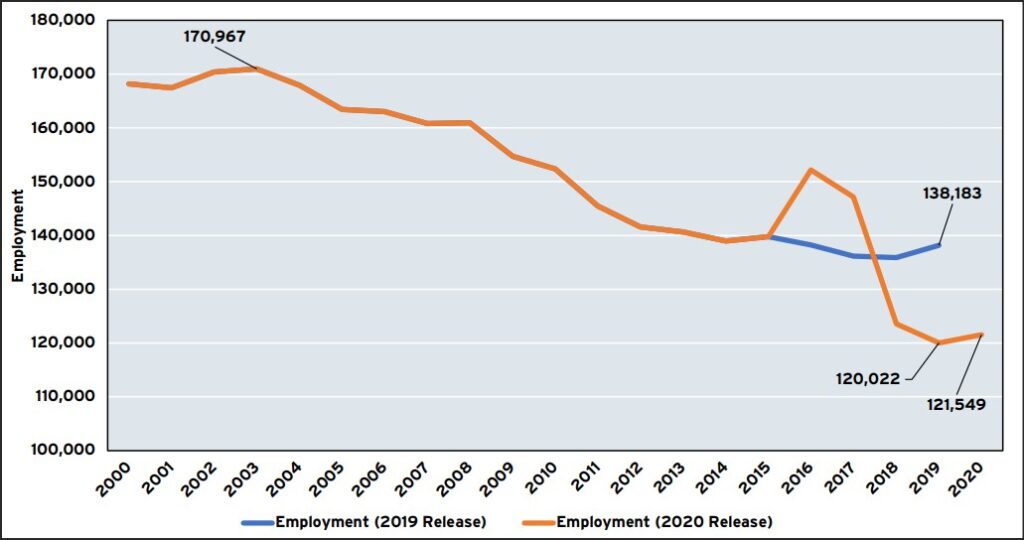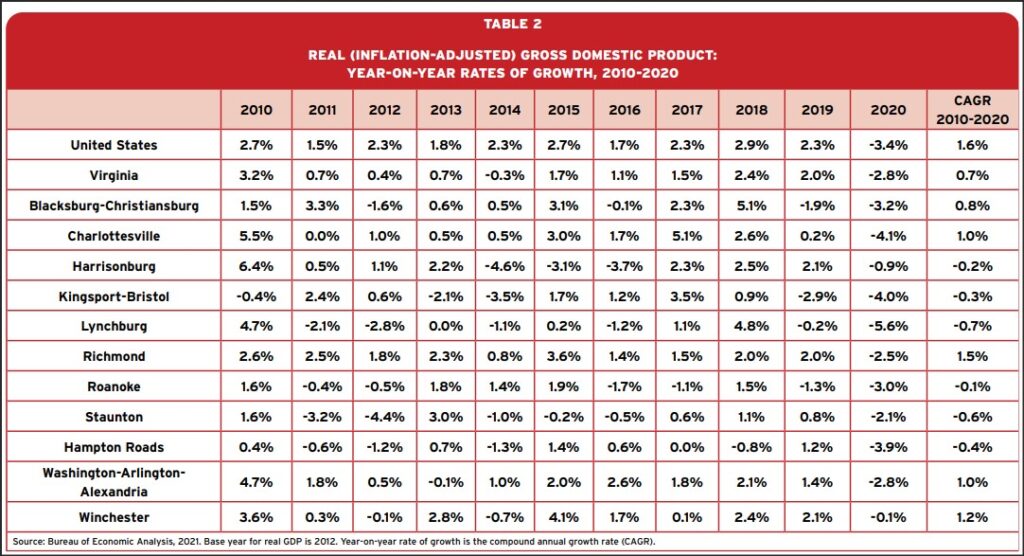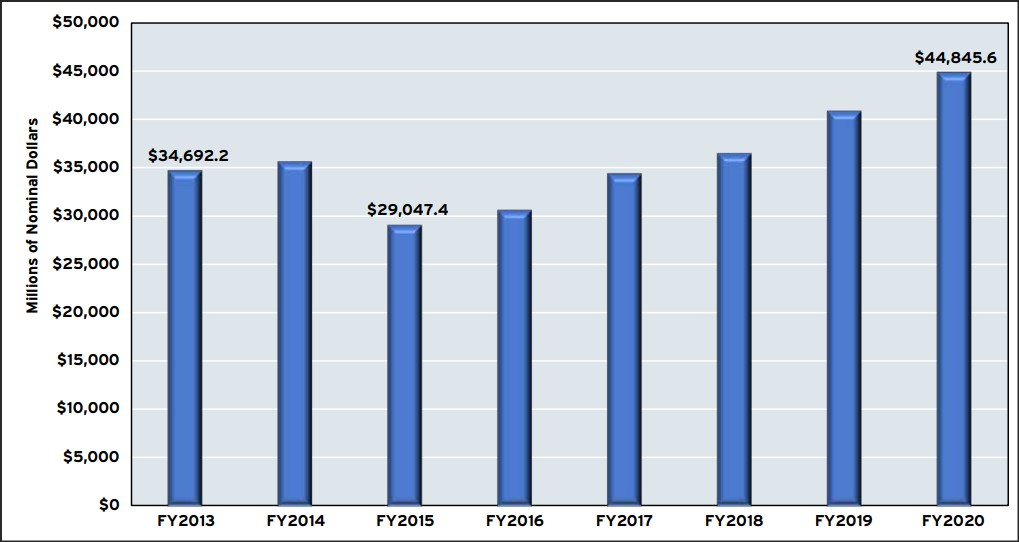Old Dominion University’s “2021 State of the Commonwealth Report” provides an unwelcome, but necessary, reminder that Virginia’s economy has been lagging since 2010. While the U.S. gross domestic product grew at a compounded annual growth rate of 1.6% between 2010 and 2020 (hardly a robust performance), Virginia’s economy grew at a mere 0.7% rate.
Of all Virginia’s metro areas, the only one that came close to matching the national growth rate was Richmond, which grew at a 1.5% rate. Virginia’s traditional growth engine, Northern Virginia, grew at a mere 1.0% rate, Winchester by 1.2%, Charlottesville by 1.0%, and Blacksburg-Christiansburg by 0.8%. The economies of Hampton Roads, Roanoke, Kingsport-Bristol, Lynchburg, Harrisonburg, and Staunton all shrank over the decade.
Hampton Roads, Virginia’s second largest metropolitan area, has been the biggest drag on Virginia’s economy, a fact undoubtedly tied to the decline in military employment in the state, as seen below:

Total full-time and part-time military jobs in Virginia, 2000 to 2020. Source: “2021 State of the Commonwealth Report”
Northern Virginia is impacted by military employment, too, but its regional economy depends more upon defense contracting. In nominal dollars, Department of Defense contract spending has, after a mid-decade dip, held up well.
Note: These numbers, which extend through 2020, do not reflect the impact of the giant Amazon expansion in Arlington, which is only now beginning to impact employment and GDP numbers. Nor do they reflect the dislocations caused by the COVID-19 pandemic — a subject for another post.
— JAB




